Concordia, Antarctica hits -83.2C, world's provisional lowest temperature since 2017
A weather station at Concordia Research Station in Antarctica may have just registered the world’s lowest temperature in six years.
According to real-time data published by Italy’s Antarctic Meteo-Climatological Observatory, the temperature at Concordia Research Station dropped to -83.2ºC on July 25.
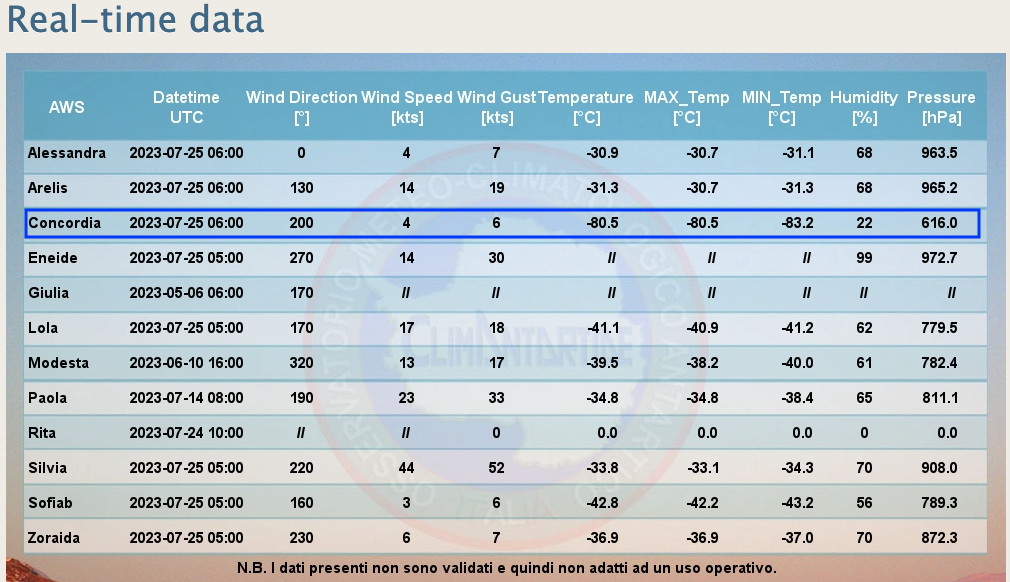
Image: Real-time temperature observations from the Concordia Automatic Weather Station (blue box), showing a provisional minimum temperature observation of -83.2ºC. Source: Antarctic Meteo-Climatological Observatory.
Another nearby Automatic Weather Station, named Dome C II, also registered temperatures lower than -80ºC, reaching -81.4ºC at 18:47 UTC on July 24 and -81.6ºC shortly before 03:00 UTC on July 25.
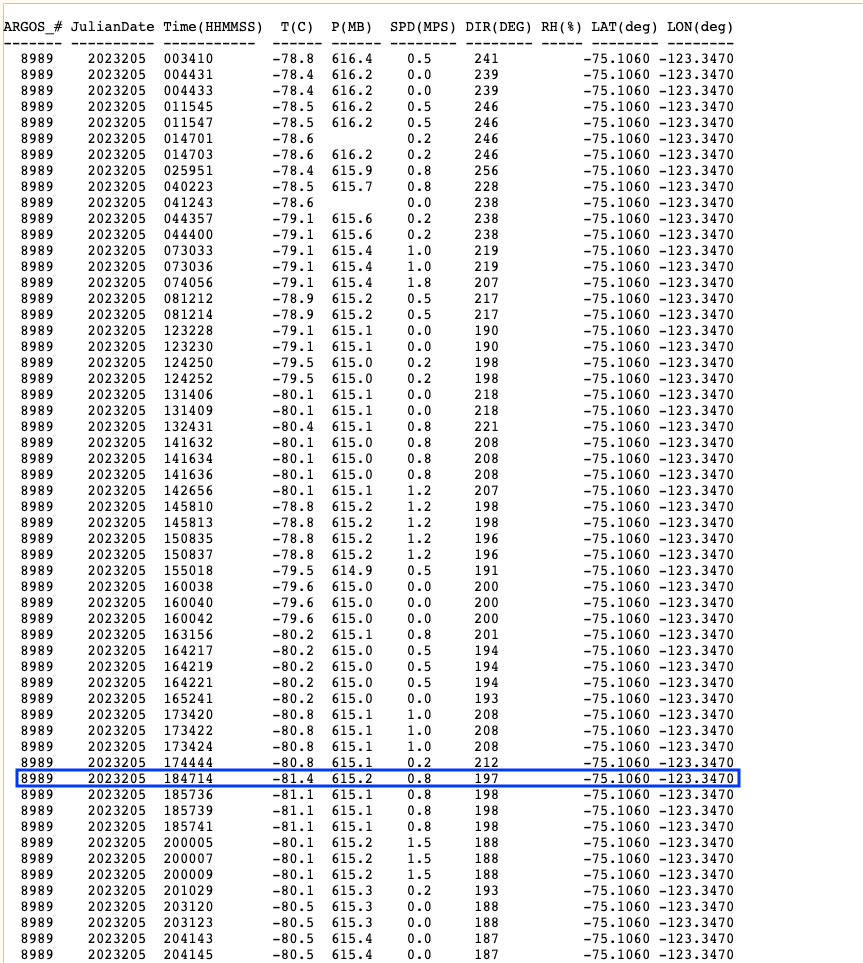
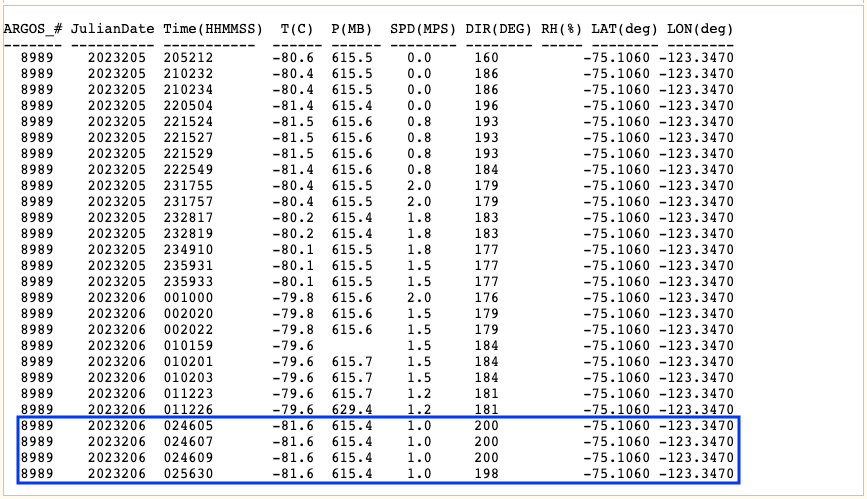
Images: Real-time temperature observations from the Dome C II Automatic Weather Station on July 24 and 25, 2023. Source: AMRC / UW-Madison
These provisional values, which need to be officially validated, are the lowest temperatures observed anywhere in the world so far this year. Prior to July 24, the coldest global temperature in 2023 was -80.5ºC at the JASE2007 Automatic Weather Station.
If valid, Concordia’s -82.7ºC would rank as the lowest temperature anywhere in the world since 2019, according to weather historian Maximiliano Herrera. The more recent lower reading of -83.1C from July 25 would be the lowest temperature globally since 2017.
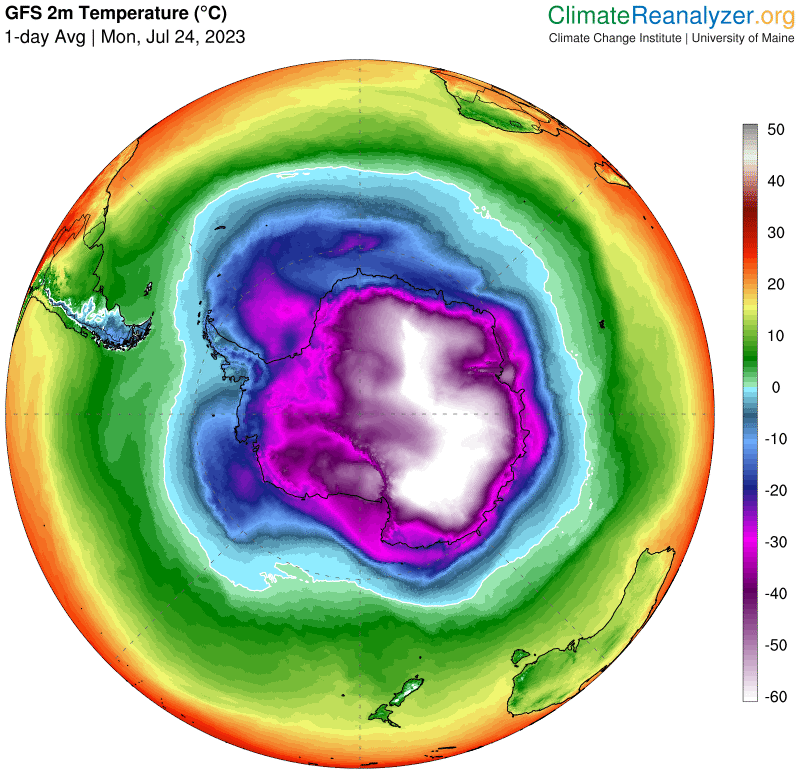
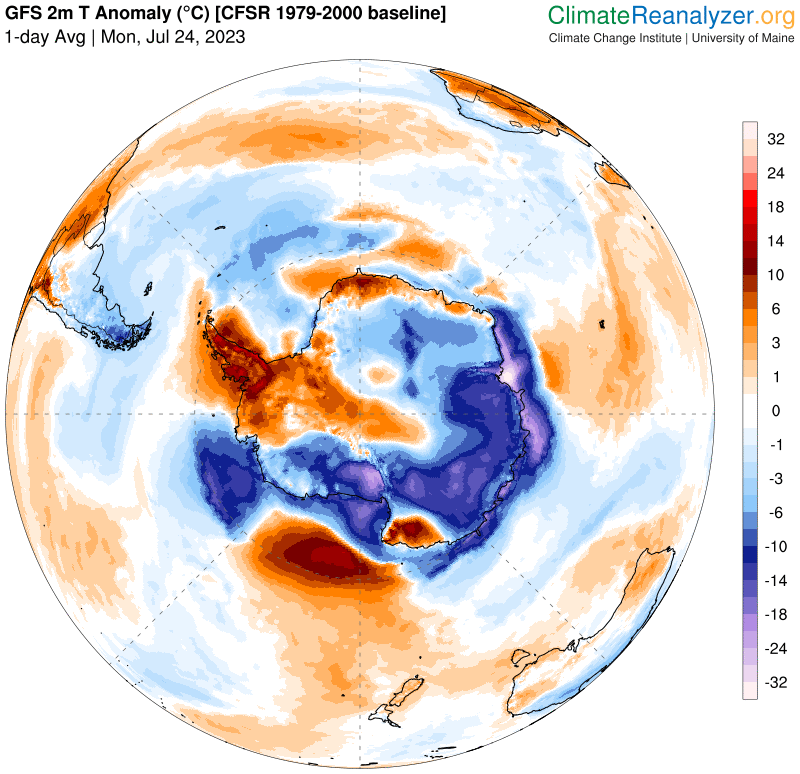
Images: Modelled surface air temperature (top) and temperature anomaly (bottom) over Antarctica on July 24, 2023. Source: ClimateReanalyzer.org
Concordia is a French-Italian research station that sits roughly 3,233 m above sea level on the Antarctic Plateau, about 1,100 km inland from Australia’s Casey Station.
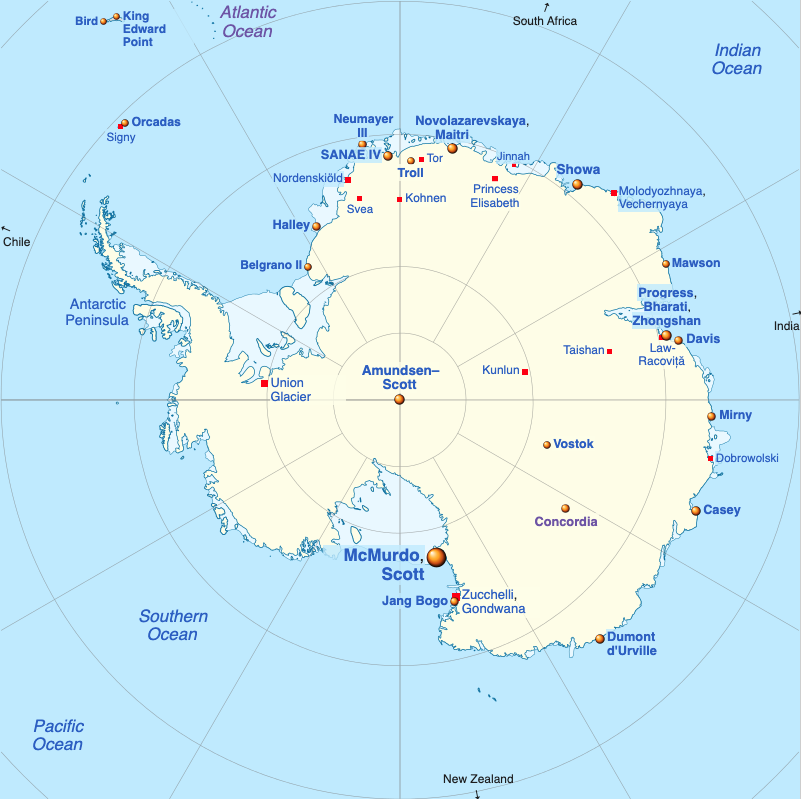
Image: Map of Antarctica showing the location of Concordia Research Station. Source: Wikipedia
This week’s exceptionally cold temperatures high on the Antarctic Plateau are a stark contrast to the record-low sea ice extent that is currently being observed near the continent’s coasts.
According to the University of Colorado Boulder’s National Sea and Ice Data Center, “Antarctic ice extent as of mid-July is more than 2.6 million square kilometers below the 1981 to 2010 average". This is an area as large as Western Australia.
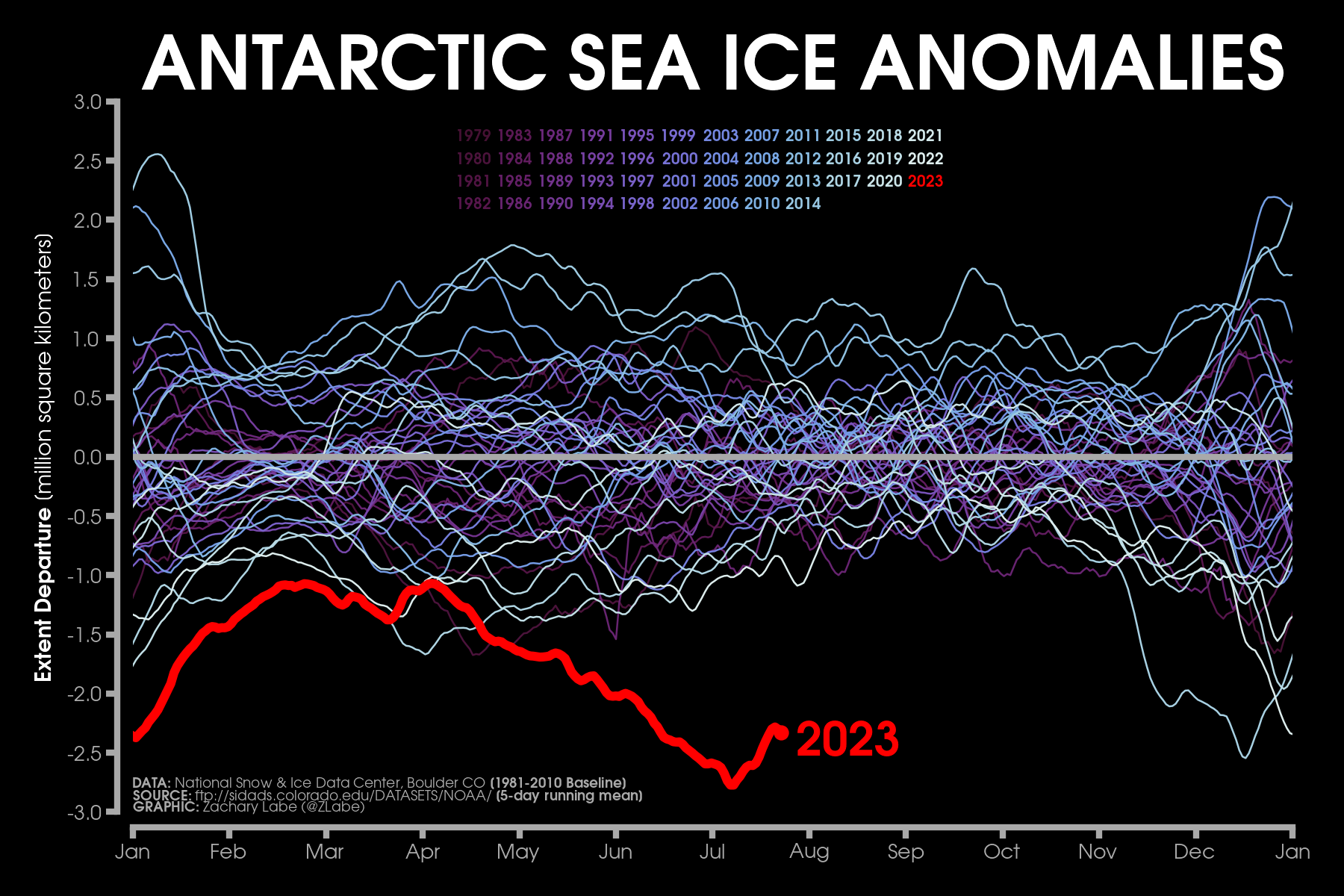
Image: Antarctic sea ice extent anomalies between 1979 and 2023, showing the current run of record-breaking low sea ice in 2023. Source: Zac Labe
Researchers are actively trying to determine why the sea ice around Antarctica has been struggling to grow this winter. The leading theory is that relatively warm water from the north has mixed into the upper-ocean layer around the Antarctic coast.